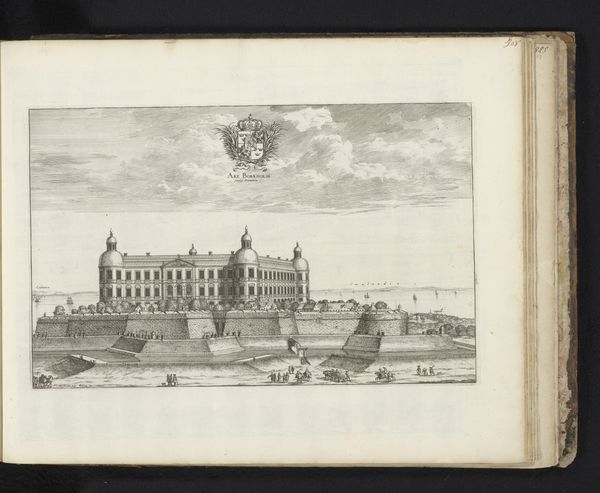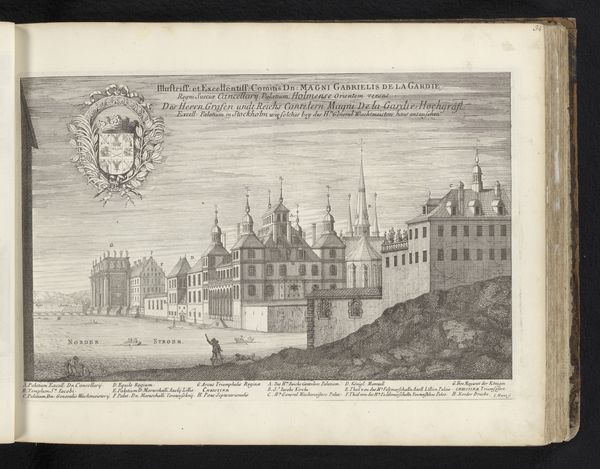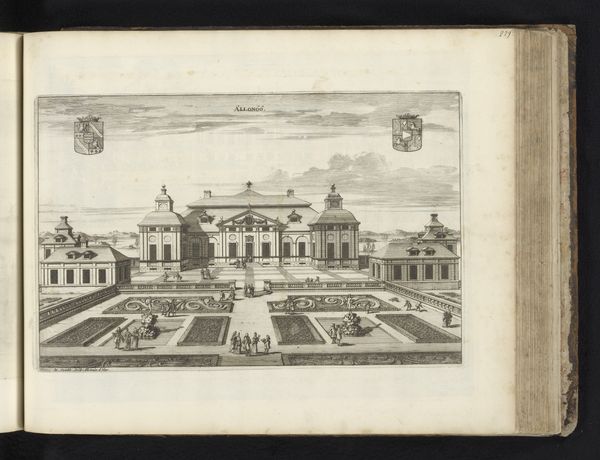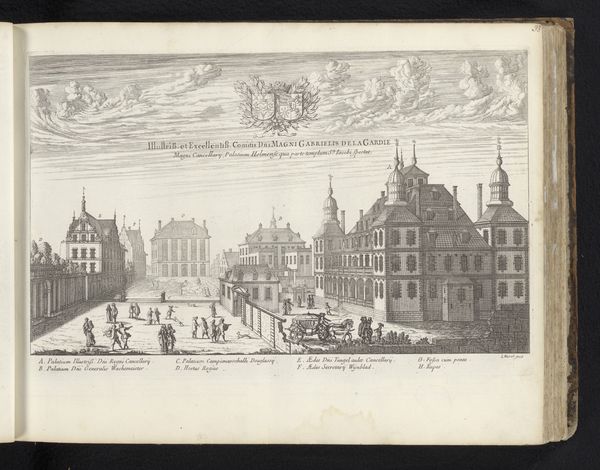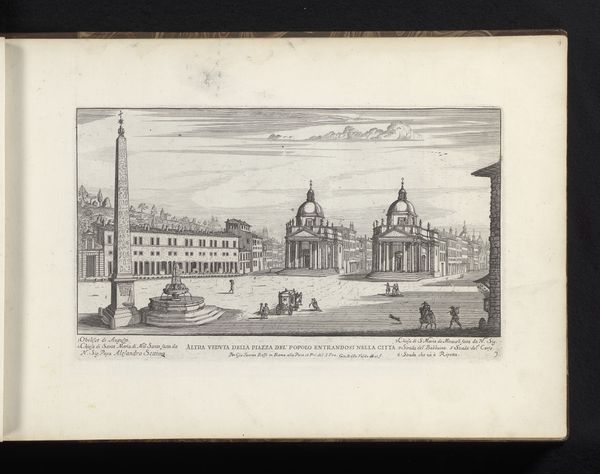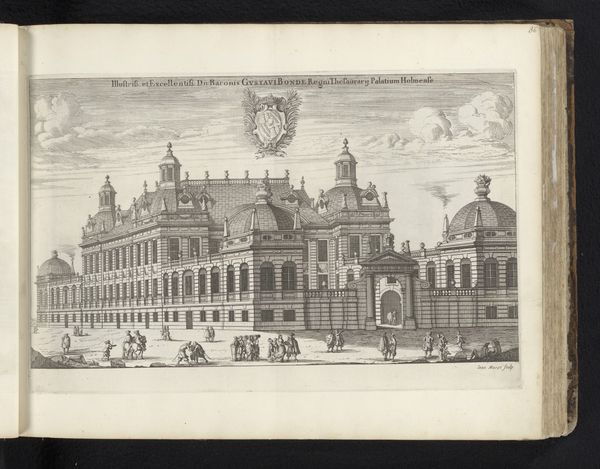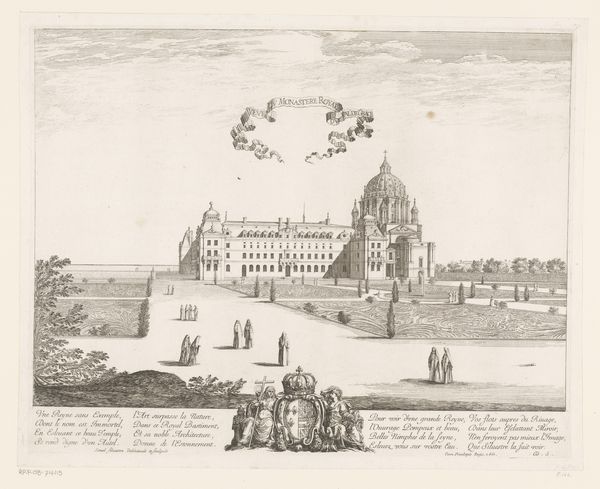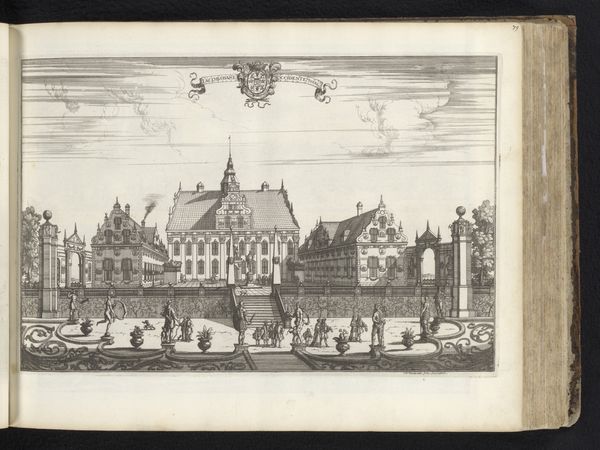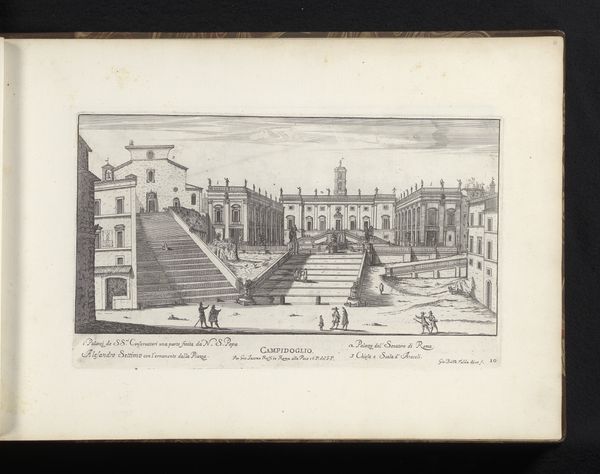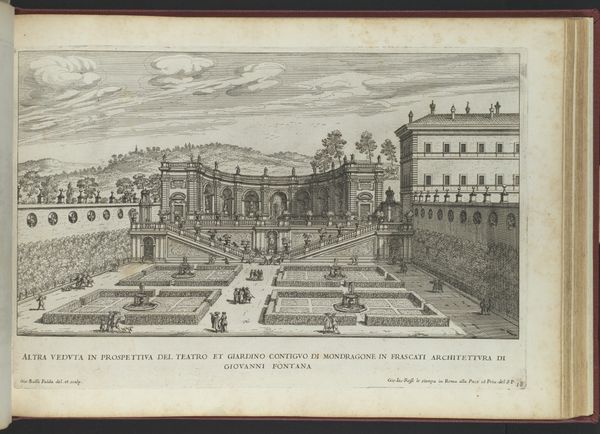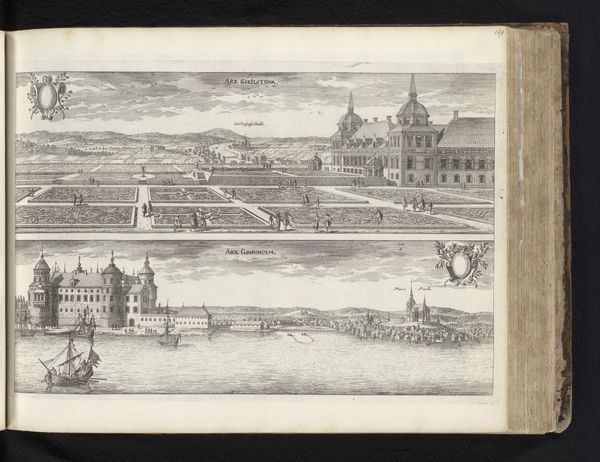
print, etching, engraving
#
baroque
#
dutch-golden-age
# print
#
etching
#
landscape
#
perspective
#
form
#
pen-ink sketch
#
line
#
cityscape
#
history-painting
#
engraving
#
realism
Dimensions: height 243 mm, width 381 mm
Copyright: Rijks Museum: Open Domain
Jean Marot produced this print of Tre Kronor Castle in Stockholm sometime in the mid-17th century. The castle dominates the skyline, but what does it tell us about the social and political landscape of the time? Marot's print presents the castle as a symbol of power and authority, both religious and secular. The artist includes a coat of arms above the castle, celebrating the Swedish monarchy, and captures the imposing architecture, reflecting the wealth and resources of the Swedish empire during its 17th-century expansion. The surrounding town is also depicted. The image provides insight into the social hierarchy of the era, with the castle standing apart from other buildings, representative of the king’s divine right to rule. Understanding the context of Sweden's rise as a major European power, along with resources on European feudalism and social structure, is vital to a fuller interpretation. This artwork offers an opportunity to reflect on the public role of art in shaping perceptions of power.
Comments
No comments
Be the first to comment and join the conversation on the ultimate creative platform.
